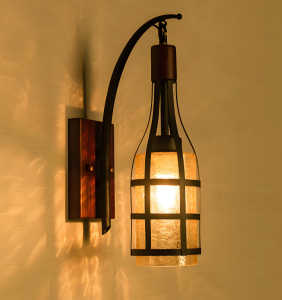
Choosing the Perfect Household Table Lamp
When selecting a table lamp, it’s crucial to consider its intended purpose in your space. Table lamps can provide task lighting for reading or working, or create ambient lighting for a cozy atmosphere. Understanding the lamp’s specific function will help determine the required type of lighting and brightness level.
For instance, a bedside lamp for reading should offer focused, adjustable light, while a living room lamp for ambiance may require softer, diffused light. The lamp’s purpose should also align with the room’s overall design and style. It should not only be functional but also complement the existing aesthetic.
In a modern, minimalist living room, a sleek, contemporary lamp Lights would be appropriate. Conversely, a traditional or eclectic space might benefit from a lamp with ornate details or a unique shape to add visual interest. By considering both function and style, you can choose a lamp that serves its intended purpose while enhancing the room’s overall appearance.
Considering the Style and Aesthetic of the Lamp
Matching the Room’s Design Theme
For instance, if your space has a contemporary and minimalist design, opt for a sleek and simple lamp with clean lines and a neutral color palette. On the other hand, if your room has a more traditional or vintage aesthetic, consider a lamp with ornate details, such as a decorative base or a stained glass shade.
Considering the Color Scheme
In addition to the lamp’s style, it’s crucial to think about how it will fit in with the specific color scheme of your room. The lamp’s color should complement or contrast with the existing colors in the space to create a cohesive and visually appealing look. For example, if your room has a neutral color palette, consider a lamp with a pop of color to add visual interest. If your room already has bold and vibrant colors, opt for a more subdued and neutral lamp to balance out the overall look.
Enhancing the Visual Appeal
By carefully considering the style and aesthetic of the lamp, you can ensure it not only serves its functional purpose but also enhances the visual appeal of your space.
Determining the Right Size and Height for Your Space
When choosing a table lamp, it’s important to consider the size and height in relation to the specific space where it will be placed. The size of the lamp should be proportionate to the furniture it will be placed on, such as a bedside table or an end table. A lamp that is too large or too small in relation to the furniture can throw off the balance of the space and look out of place.
Additionally, the height of the lamp is crucial in determining its functionality. For example, if you’re looking for a lamp for reading in bed, you’ll want to ensure that it is tall enough to provide adequate light without casting shadows on your book. On the other hand, if you’re looking for a lamp to add ambient lighting to a living room, you may want to consider a shorter lamp that will not overpower the space.
In addition to considering the size and height in relation to furniture and functionality, it’s also important to think about how the lamp will fit within the overall scale of the room. A large room with high ceilings may require larger and taller lamps to fill the space and provide adequate lighting. Conversely, a smaller room with lower ceilings may benefit from smaller and more compact lamps that won’t overwhelm the space.
By carefully determining the right size and height for your space, you can ensure that the table lamp not only fits in seamlessly with your furniture but also contributes to the overall balance and harmony of the room.
Evaluating the Different Types of Lighting
When choosing a table lamp, it’s important to evaluate the different types of lighting available to determine which will best suit your needs. There are several types of lighting that table lamps can provide, including ambient lighting, task lighting, and accent lighting. Ambient lighting is general illumination that fills a room with overall light, creating a comfortable and inviting atmosphere.
Task lighting is focused light that is directed onto a specific area for activities such as reading or working. Accent lighting is used to highlight specific features or objects in a room, such as artwork or architectural details. By evaluating the different types of lighting, you can determine which type or combination of types will best serve your specific needs.
In addition to considering the different types of lighting, it’s also important to think about how adjustable the light is. Some table lamps offer adjustable arms or shades that allow you to direct light exactly where you need it, making them ideal for tasks such as reading or working. Other lamps may offer multiple brightness settings or dimmer switches that allow you to customize the level of light based on your needs and preferences.
By evaluating these different features, you can ensure that the table lamp not only provides the type of lighting you need but also offers flexibility and customization for various activities and moods.
Exploring Energy Efficiency and Bulb Options
In today’s environmentally conscious world, exploring energy-efficient options for table lamps is crucial in reducing energy consumption and minimizing environmental impact. LED bulbs are one of the most energy-efficient options available for table lamps, consuming significantly less energy than traditional incandescent bulbs and lasting much longer. LED bulbs also produce less heat, making them safer and more comfortable to use for extended periods of time.
Additionally, LED bulbs come in a variety of color temperatures and can be dimmable, offering flexibility in creating different atmospheres and moods in your space. By exploring energy-efficient bulb options such as LED, you can not only save on energy costs but also contribute to a more sustainable and eco-friendly lifestyle. In addition to energy efficiency, exploring different bulb options can also help you achieve the desired lighting effect in your space.
For example, if you’re looking for warm and cozy ambient lighting, you may want to consider soft white or warm white LED bulbs. On the other hand, if you need bright and focused task lighting for reading or working, you may want to opt for daylight or cool white LED bulbs. By exploring different bulb options and their respective color temperatures, you can ensure that the table lamp provides the right type of light for your specific needs and preferences.
Budgeting for Your Ideal Table Lamp
Long-Term Value and Durability
High-quality lamps often come with better warranties and customer support, providing added peace of mind and assurance in your purchase. By budgeting for your ideal table lamp with long-term value in mind, you can make an informed decision that aligns with your budget while ensuring quality and durability.
Additional Costs to Consider
In addition to considering long-term value, it’s also important to think about any additional costs associated with operating and maintaining the table lamp. For example, energy-efficient LED bulbs may have a higher upfront cost than traditional incandescent bulbs, but they will save you money on energy bills over time due to their lower energy consumption and longer lifespan.
Making a Well-Informed Decision
Some table lamps may require specific types of bulbs or shades that could incur additional costs down the line. By factoring in these additional costs when budgeting for your ideal table lamp, you can ensure that you’re making a well-informed decision that aligns with your financial considerations.
Maintenance and Care for Longevity
Once you’ve chosen and purchased your ideal table lamp, it’s important to establish a maintenance routine to ensure its longevity and optimal performance. Regular dusting and cleaning are essential in keeping your table lamp looking its best and preventing dust buildup from affecting its functionality. Depending on the material of your lampshade and base, specific cleaning methods may be required to avoid damage or discoloration.
Additionally, checking and tightening any loose screws or connections periodically can help prevent potential safety hazards and prolong the lifespan of your table lamp. In addition to regular cleaning and maintenance, it’s important to handle your table lamp with care to avoid accidental damage or breakage. When moving or adjusting your table lamp, always support its base rather than pulling on its cord or shade to prevent strain on its components.
If your table lamp has any movable parts such as adjustable arms or shades, use them gently and avoid forcing them beyond their intended range of motion. By establishing good maintenance habits and handling your table lamp with care, you can ensure that it remains in optimal condition for years to come. In conclusion, choosing a table lamp involves careful consideration of its purpose, style, size, lighting types, energy efficiency, budgeting, and maintenance.
By understanding these key factors and making informed decisions based on them, you can select a table lamp that not only meets your functional needs but also enhances the aesthetic appeal of your space while providing long-term value and durability through proper care and maintenance.

